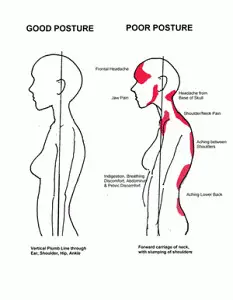Try Inversion Tables For Sciatica
If you’re looking for immediate sciatica pain relief, there are a few things you can do. However, it’s important to remember that sciatica is a symptom of an underlying condition, so you’ll need to address the underlying cause in order to find long-term relief. In the meantime, here are a few things you can do for immediate sciatica pain relief.
Contents
The Most Effective Pain Relief for Sciatica?
The most effective pain relief for sciatica is to use low-level heat and/or inversion tables. You can use adhesive heat pads, which are available at drug stores, or you can take a warm bath. Either method will provide instant pain relief by relaxing tight muscles.
If you want to prevent future sciatica pain, it’s a good idea to start with a warm bath. This is the most effective method for long-term relief. By relaxing your muscles, you’ll reduce the pressure on your sciatic nerve and prevent future pain.
Stretching Works Very Well
If you are looking for immediate sciatica pain relief, one of the best things you can do is start stretching. Stretching can help to improve your overall spinal health, and it can also help to prevent future flare-ups. In addition, stretching can help to increase your spinal flexibility and strength.
One of the best ways to get started with a stretching routine is to find a class or program that is specifically designed for people with sciatica. There are many different types of classes and programs available, so you should be able to find one that is right for you. If you are not sure where to start, you can always ask your doctor or physical therapist for recommendations.

Once you have found a stretching routine that you feel comfortable with, it is important to focus on your breathing. Proper breathing is essential for getting the most out of your stretches. Make sure that you inhale deeply and exhale slowly. It may also be helpful to hold each stretch for 10 seconds or longer.
In addition to stretching, another great way to relieve sciatica pain is to add some targeted exercises into your everyday routine. These exercises should focus on strengthening and stabilizing the muscles in your back and pelvis. If you are not sure which exercises are best for your particular situation, you can always ask your doctor or physical therapist for recommendations.
Finally, it is important to remember that self-care is an important part of managing sciatica pain. Be sure to get plenty of rest and avoid activities that aggravate your symptoms. If necessary, consider talking to a counselor or therapist who can help you manage stress in a healthy way.
Walk For Sciatic Nerve Pain Relief
Walking is often recommended as part of a pain-fighting strategy for many types of pain, including sciatica. This is because walking releases pain-fighting endorphins and because it helps to keep the sciatic nerve mobile, which can prevent further irritation.

While walking may not provide complete sciatica pain relief in all cases, it is often successful in reducing symptoms enough to allow people to get on with their lives. In many cases, walking is also successful in preventing the recurrence of sciatica.
The best results are usually achieved by combining walking with other forms of exercise and Sciatica treatment such as stretching, yoga, or Tai Chi. If you are struggling to walk due to your pain, your local chiropractor can help you to develop an effective approach to getting moving again.
Gentle Exercise Always Helps
Sciatica is caused by compression of the sciatic nerve. The sciatic nerve is the longest and widest single nerve in your body. It runs from the base of your spine through your buttocks and all the way down both legs, ending at your feet. When this nerve is compressed or irritated, it can cause lower back pain, hip pain, and leg pain. Sciatica can be caused by a number of things, including a herniated disc, Piriformis Syndrome, pregnancy, and muscle imbalance.

There are a number of things you can do for immediate sciatica pain relief. Gentle exercise always helps. Exercise releases endorphins, which are natural painkillers produced by your body. Simple exercises like walking or swimming can help to ease the pain caused by sciatica. However, you should avoid any exercise that puts strain on your lower back or legs.
Another great way to find sciatica pain relief is to much rest as possible. This doesn’t mean that you should stay in bed all day long. Instead, take breaks throughout the day to rest your back and legs. If you must stand for long periods of time, take a few minutes every hour to sit down and rest your back and legs.
There are also a number of things you can do to avoid exacerbating your sciatica pain. One great example is to avoid sitting for long periods of time. If you must sit for extended periods, try to keep a good posture and use a pillow or lumbar support to protect your lower back. You should also avoid any activities that require you to twist your spine or put pressure on your lower back or legs.
Ice Packs and Heating Pads
There are a few things you can do for immediate sciatica pain relief. Applying Ice Packs and Heating Pads alternately is one way that may give you some short-term sciatica pain relief. Heat dilates blood vessels and brings more blood flow to the impacted area, which can help reduce muscle spasms and inflammation, two major causes of sciatic pain. Ice, on the other hand, numbs pain signals and can help reduce inflammation.
Applying them alternately can give you the best of both worlds for short-term sciatica pain relief. Another way to get some short-term sciatica pain relief is to take over-the-counter anti-inflammatory medications such as ibuprofen or aspirin. Just be sure not to take theseMedications for more than a few days as they can cause gastrointestinal bleeding.
Pay Attention to Your Posture
 One of the most important things you can do for immediate sciatica pain relief is to pay attention to your posture. The way you position your spine, especially when sitting or standing, can put additional pressure on your sciatic nerve and make your sciatica symptoms worse.
One of the most important things you can do for immediate sciatica pain relief is to pay attention to your posture. The way you position your spine, especially when sitting or standing, can put additional pressure on your sciatic nerve and make your sciatica symptoms worse.
If you’re not sure what good posture looks like, there are plenty of resources available online or through your local library that can show you how to position your spine correctly. If you’re not able to maintain good form for long periods of time, take a break every 20 minutes or so to reset your posture.
In addition to paying attention to your posture, be careful not to do any activities that put additional pressure on your spine. For example, if you’re lifting something heavy, be sure to use good form and lift with your legs instead of your back. And if you know you’ll be sitting for long periods of time, try to find a position that doesn’t increase the pressure on your spine.
Medication in Moderation
There are many options for sciatica pain relief. One of the best things you can do is take medications. The most common medications are non-steroidal anti-inflammatory drugs (NSAIDs), which can be bought over the counter or by prescription.
NSAIDs work by reducing inflammation, which is often the cause of sciatica pain. However, they come with some health risks, so it’s important to talk to your doctor before taking them. NSAIDs may not be a good option for people with certain conditions, such as kidney disease, heart disease, or ulcers.
Other over-the-counter medications that may provide sciatica pain relief include acetaminophen and muscle relaxants. Again, it’s important to talk to your doctor before taking any of these medications. Some have serious side effects and should only be used under a doctor’s care.
If over-the-counter medications don’t provide relief, your doctor may prescribe stronger drugs, such as opioids or injections. These options should be used as a last resort because they come with a risk of addiction and other serious side effects.
Can Inversion Tables Help with Sciatica?
If you’re struggling with sciatica pain, you’re not alone. This degenerative spine condition affects millions of Americans and often leads to expensive and invasive spine surgery. But before you go under the knife, it’s important to explore all of your options for non-surgical sciatica treatment. One option that shows promise is inversion table therapy.
Inversion table therapy is a type of gravitational traction that can help to relieve pressure on the spine. By suspending the body from an inversion table, gravity can help to elongate the spine and take pressure off of the disks and nerves. This can provide relief from joint pain, daily activities, and even spinal pain caused by degenerative conditions like sciatica.
If you’re considering inversion therapy for sciatica, it’s important to speak with your doctor first. Inversion therapy is not for everyone, and there are certain risks associated with this type of treatment. However, for many people suffering from sciatica, inversion table therapy can be a safe and effective way to find relief from this debilitating condition.
Visit Your Doctor
While some people find that stretching exercises, over-the-counter painkillers, and massage can give them some sciatica pain relief, it’s important to see your doctor if you’re dealing with this problem. In most cases, sciatic nerve pain is caused by a herniated disk, degenerative disk disease, or spinal stenosis. These conditions can lead to permanent nerve damage if they’re not treated properly.
Your doctor will likely take a comprehensive approach to treat your sciatica pain. This may include regular chiropractic adjustments, physiotherapy, and massage. In rare cases, surgery may be necessary to relieve the pressure on your sciatic nerve.
Your doctor will likely give you a personalized treatment plan based on the severity of your sciatica pain. This plan may include at-home exercises and stretching, over-the-counter pain medication, or prescription medication. You may also need to make an appointment for regular chiropractic adjustments or massage therapy sessions.
If you’re looking for immediate sciatica pain relief, you may want to try a holistic approach that includes acupuncture, yoga, and meditation. These therapies can help to relax your muscles and reduce inflammation.
Frequently Asked Questions
What is a natural way to ease pain from sciatica?
There are a number of things you can do to ease pain from sciatica. Taking over-the-counter pain medication, applying heat or ice to the affected area, and doing stretches or exercises that help relieve pressure on the sciatic nerve are all effective methods.
Why is my sciatica not going away?
There are many possible reasons why your sciatica is not going away. It is possible that the underlying cause of your sciatica has not been properly diagnosed or treated. Additionally, sciatica can be a chronic condition that requires ongoing management. Finally, it is possible that you are not doing enough to manage your sciatica on your own. Some self-care measures that can help reduce sciatica pain include: practicing good posture, stretching and strengthening the muscles in your back and legs, using heat or ice to reduce inflammation, and taking over-the-counter pain relievers.
Is sciatic pain permanent, or will it go away?
Sciatic pain can be temporary or permanent. If the pain is caused by a herniated disc or spinal stenosis, it is more likely to be permanent. If the pain is caused by muscle inflammation or a pinched nerve, it is more likely to be temporary.
sciatica pain, sciatic nerve, sciatic nerve pain, immediate relief, sciatic pain, physical therapy, long-term relief, pain relief, physical therapist, many things, spinal stenosis, good posture, underlying cause, back pain, nerve pain, sciatica symptoms, affected area, sciatica pain relief, alleviate pain, few weeks, spinal canal, ice therapy, nerve roots, cold therapy, common causes, ice pack, blood flow, over-the-counter pain medication, many people, muscle tension, back pain, herniated disc, epidural, scoliosis, chiropractic care, spinal, Motrin, spinal discs, laminectomies, annulus, microdiscectomy, piriformis syndrome, Advil, lumbar radiculopathy, degenerative disc disease, lumbar disc herniation, chiropractor, pain treatment, the longest nerve in the body, failed back surgery, psoas, lower back pain, disc degeneration, sciatic pain
Conclusion
If you are looking for the fastest and most effective sciatica pain relief, you should visit a chiropractor. A chiropractor can help to identify the root cause of your sciatica pain and develop an exercises plan to address it. In most cases, you can expect to see significant improvements within several weeks.
In addition to exercises, you may also find relief through ice therapy or inversion therapy. Ice therapy can help to reduce inflammation, while inversion therapy can help to decompress the spine. Inversion tables are a popular option for inversion therapy at home.
Try Inversion Tables For Sciatica

James Nystrom is a leading researcher in the field of hip pain. He has spent his career studying the latest treatments and techniques for relieving hip pain, and he is known for his innovative approach to care. He is passionate about helping his patients find relief from their pain and improving their quality of life. He is also a huge fan of inversion therapy and all things related to health and well-being.

